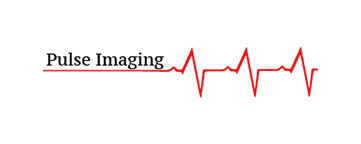Triglycerides
Also Known As: TRIG Test, TG, Fasting Lipoprotein Panel, Lipid Panel
What is a Triglycerides Test?
The triglycerides test measures the number of triglycerides in your blood serum. Triglycerides are one of the many types of fats or lipids present in the bloodstream. Most of your body fat is stored in the tissues in the form of triglycerides. Therefore this test measures triglyceride blood levels and other lipids levels like cholesterol for better diagnosis and assessment.
The triglycerides are often found in foods like animal fats and vegetable oils. The triglycerides in the blood serum are present in a mixture of fats obtained through dietary sources and the ones produced by the body as a source of energy. When you eat, your body converts the calories it doesn't need to use into triglycerides. These triglycerides are later stored in your fat cells or released for energy during mealtimes. If you regularly consume more calories than your body requires ( mainly through high carbohydrate foods), you may develop a condition called hypertriglyceridemia.
High triglycerides levels can also be due to different disease processes. When not treated properly, this medical condition can become a risk factor for the hardening of your arteries, i.e., atherosclerosis. It is because most triglyceride-containing lipoproteins transport fat in your blood along with cholesterol, another most significant contributor to atherosclerosis. Most of the time, elevated triglyceride levels are found with elevated cholesterol levels, a condition known as mixed hyperlipidemia.
What Is The Test Used For?
The triglyceride test indicates the amount of triglycerides in your blood. These triglycerides are your body's storage form of fat. Most of them are found in your adipose fat tissues, but some keep circulating in the blood to deliver fuel for your muscles to work. Extra triglycerides can be present in your blood after consuming a meal when the fat is sent from the gut towards the fat tissues for the depository. Triglycerides are also known as saturated and unsaturated fats that you often read about on different food labels.
The most common reason behind checking your triglyceride levels is to conduct a lipid profile test and estimate your risk of developing cardiovascular disorders. Since triglycerides are a form of fat or lipid, they are included in a lipid profile. But, here, it is important to mention that unlike cholesterol, which is a clear cause of cardiovascular diseases, the arrangement between cardiovascular disorders and triglycerides is less complicated yet essential to acknowledge.
Therefore you should keep the blood triglyceride concentrations as low as possible, especially if you are susceptible to developing cardiovascular diseases for any known reason. High triglycerides levels can lead to a serious medical condition called pancreatitis, i.e., inflammation of the pancreas and pancreatic glands. If you somehow develop this condition, your doctor will check the triglyceride concentrations in your blood to rule out the causes.
Why And When Do You Need A Triglycerides Test?
The triglyceride test is often performed to help your doctor determine your risk of developing heart diseases. It also helps them estimate the precise LDL cholesterol levels in your bloodstream. It can indicate an ongoing inflammation of the pancreas as well as your chances of developing atherosclerosis.
Atherosclerosis is a condition that occurs when excessive fat builds up inside your arteries. It can increase your chances of getting a stroke or heart attack to two folds. You should get this test done as a part of your overall lipid profile every 5 to 6 years to analyze the levels of the following:
- LDL, i.e., low-density lipoproteins
- HDL, i.e., high-density lipoproteins
- Cholesterol
- Triglycerides
If you already have a high triglyceride level, your doctor or health care provider can also order this test frequently to monitor the effectiveness of your treatment plan. If you are a pre-diabetic or diabetic patient, you must also monitor your triglycerides level regularly, as they tend to increase when you are not properly maintaining your blood sugar levels.
Young children can also need this test if they are susceptible to developing heart diseases. This category includes children who are obese, overweight, or come with a family history of heart disorders, diabetes, and high blood pressure. Children at increased risk of heart diseases might need to undergo the triglycerides test between 2 and 10 years of age.
What Kind Of Sample Is Required For The Test?
A triglycerides test is a blood test during which a doctor or health care professional takes a blood sample from a vein in your arm. After inserting the needle, they will collect a small amount of blood in a test tube or vial and then send it to the laboratory for further analysis and examination. You might feel a little sting when the needle goes in or out, but the overall process is straightforward and barely takes 5 minutes.
Do You Need To Prepare For The Test?
The current triglyceride testing standard suggests the test can be performed when you are fasting for at least 9 to 12 hours. Only water is permitted, but your health care provider can decide if you can be tested without keeping a fast. You must follow all the given instructions and let the lab technician know whether or not you have fasted. Moreover, alcohol consumption is also prohibited for 24 hours before the test.
Are There Any Risks To This Test?
There are almost little to no risks to having this blood test done. Some people might experience slight pain and bruises at the injection spot, but most symptoms are mild and usually go away instantly.
What Do The Test Results Mean?
In general, your healthy lipids levels are important to maintain a healthy heart and decrease the risk of stroke or heart attack. Your doctor will consider the results regarding each component of your lipid profile along with other risk factors to determine your risk of getting heart diseases.
Only your doctor can decide if the treatment is necessary and, if so, which treatment plan will be the most effective to lower your risks.
For adults, the normal triglyceride levels are as follows:
- Normal fasting: 150 mg/DL
- Borderline high: 150-199 mg/DL
- High: 200-499 mg/DL
- Very high: more than 500 mg/DL
There are so many reasons for elevated triglycerides levels, most of which are due to unhealthy lifestyle habits such as:
- Smoking
- Eating a diet low in protein and high in carbohydrates
- Having a sedentary or inactive lifestyle
- Alcohol consumption or binge drinking
- Obesity and overweight
Some medical conditions can also lead to high triglyceride levels like:
- Cirrhosis
- Pancreatitis
- Uncontrolled diabetes
- Hypothyroidism
- Kidney diseases or Nephrotic syndrome
- Genetic factors
Lower than normal triglycerides can be due to:
- Malnutrition
- Low-fat diet
- Hyperthyroidism
- Malabsorption syndrome
The test results mean different things for children, so it is better to talk to a doctor to interpret the results as well as an appropriate course of action.
Related Tests: HDL Cholesterol Test, LDL Cholesterol Test, Lipid Panel, Fasting Blood Sugar Test.
Frequently ordered together
Glucose Fasting
Cholesterol Total
Hemoglobin A1C
High Density Lipoprotein HDL
Low Density Lipoprotein LDL
Lipid Profile
Lipid Panel with reflex to direct LDL
Cholesterol and Lipids test
Advanced Lipid Panel Cardio IQ
14.00$
14.00$
20.00$
18.00$
21.00$
23.00$
25.00$
94.00$
133.00$














